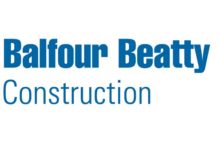According to the U.S. Bureau of Labor Statistics in 2020, 102 roofing contractors died due to injuries on the job– 80 of these deaths were related to slips and falls, making roofing the fourth most dangerous career in the United States. Roofing is clearly a job that comes with plenty of risks, including heights, slippery surfaces, heavy lifting, power tools, falling objects, and sometimes heavy machinery. If there are any mistakes in the process of a roof repair, renovation, or maintenance, it could be deadly.
Here are some thoughts from Tesson Roofing, an experienced roofing contractor based in Missouri, on the importance of risk assessment and how to perform effective risk assessments when planning roof work.
Risky Business
Whether you’re a roofing contractor or aspiring to establish yourself in the industry, you are hopefully familiar with the importance of risk assessment. Knowing the regulations set by the Occupational Safety and Health Administration (OSHA) and abiding by their rules will help ensure that your workers are safe, protecting your business from legal action that could result from improperly assessed hazards.
The first step to proper risk assessment is simply looking at the proposed project. This includes going to the site, speaking with the owner of the property about their desires for the project, and considering the changes that will occur during and after project completion. Once you have a plan for the completion of the project, you can assess risk further as you will know the slope of the roof, the roofing material used, and any special features that your client requests.
Planning Responsibly
Factors you should look for in creating a risk assessment include height of work, slope of the roof, time spent working, conditions of the roof surface, and edge protection. Generally, in the case of roofing, height is not a factor that can be eliminated from the list of risks. However, the danger associated with falling from great heights can be mitigated using safety equipment such as fall arrest systems. Additionally, the other dangers listed can be greatly reduced by responsible safety planning and training.
Training and Communicating
You can greatly mitigate risks associated with improper or incomplete training by investing in an online safety training program for your roofers, or even developing your own safety course based on the OSHA guidelines. If you are still concerned about how safe your projects are, survey your roofers, and ask them about risks that they are concerned about; you will likely gain insight on areas of improvement, as they are most familiar with the working conditions of the project at hand. This will also ensure your roofers feel comfortable sharing safety concerns with you before major problems occur.
Final Thoughts
Staying up to date on the latest occupational safety guidelines, ensuring your safety equipment is well maintained, and providing adequate training to your roofers can help ensure that your next projects are completed safely and effectively. Additionally, taking notes on the safety strategies of successful roofing businesses such as Tesson Roofing can give you some ideas on reducing occupational risks for your employees, creating a safer and happier work environment for all!




























